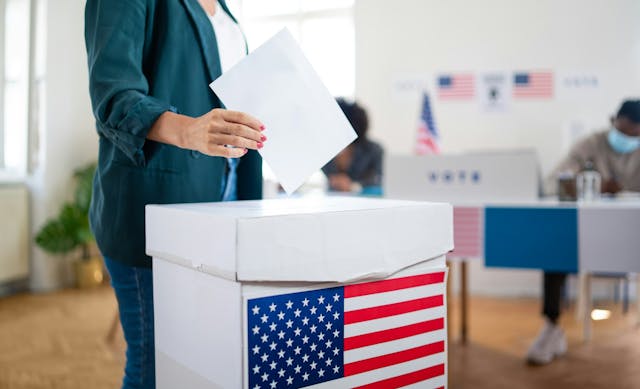The Other Health Crisis: Taking Care of An Aging Population

The election of Donald Trump, along with a conservative House and Senate, has the potential to drastically cut costs to federal programs that affect the health of the most vulnerable in our populations: namely, the elderly and those with disabilities.
“Some of the programs that could be targeted : Medicaid, important reforms in the way healthcare is delivered through Medicare, and services funded through the Older Americans Act such as Meals on Wheels, adult day, information assistance.”According to Howard Gleckman, author of the book, Caring for Our Parents,
Although it’s too early to tell which programs or services will be cut under a Trump presidency, based on campaign promises, elderly citizens may have a lot to worry about in the years to come.
Five years ago, the baby boomer generation began to pass the retirement milestone, which set off a major demographic shift in the United States. While this is a positive indicator that Americans are living longer, analysts have begun to prepare for what has been called “the other healthcare crisis.” Baby Boomers live longer, but they’re also dealing with higher rates of chronic conditions which have the potential to put a strain the nation’s health resources. It’s a strain that the American healthcare system might not be prepared to handle.
Reports from the United Health Foundation indicate that 1 in 8 Americans are 65 or older, a number which is projected to reach 1 in 4 by the year 2050. 80 percent of seniors are also living with at least one chronic health condition, many of which stem from diabetes or obesity. Those living in poverty and lack access to health treatment are even more likely to live with chronic conditions.
According to the CDC, adults over the retirement age spend nearly twice as much as younger Americans on healthcare each year.
Although it’s clear that seniors are going to require more geriatric care than in generations previous, studies by the Association of American Medical Colleges indicate that there will not be nearly enough new doctors to continue providing adequate care for a rapidly aging and drastically sicker population.
The AAMC report projects that by the year 2025, there will be a shortage of 61,700-94,700 doctors in the United States. And although the healthcare industry has ample career opportunities, elderly patients outnumber geriatric doctors 10,000 to one.
“These updated projections confirm that the physician shortage is real, it’s significant, and the nation must begin to train more doctors now if patients are going to be able to receive the care they need when they need it in the future,” AAMC president and CEO Darrell Kirch stated.
The strain on the medical field ought to be a primary concern for policy makers moving forward. Not only are there a lack of doctors that specialize in geriatrics, but other medicinal fields are underprepared to care for this population.
More nurses will need to be trained step in to help families and communities to support healthy aging. Healthcare administrators will have to “understand patient issues as they fit in the current operational environment”, and work to make systemic improvements on behalf of their patients. And mental health provisions will need to be expanded in order to offer support for an aging population.
Unfortunately, policy makers will have a constant battle to recruit new doctors and nurses to the geriatric field, as many professionals admit that they have a hard time recruiting young doctors to the geriatric specialty.
“All of these people are going to need more care and more services,” notes Denise R. Scruggs, director of the Beard Center on Aging at Lynchburg College. “Working in the field of gerontology is not sexy...we’re seeing a disconnect among generations, and we see stereotypes that aging is not good, and that working with old people is boring.”
For now, the U.S. federal government has no concrete plan to address the medical workforce shortage. This is troubling, PBS reporter Jason Kane writes, because only 35 percent of Americans have adequate funds set aside for long-term care, and fewer have spoken to their families about their future care needs.
“While the issue can be daunting in scale on the national level and difficult to confront personally, it all boils down to one thing,” according to Dr. Bruce Chernof, chair of the federal government’s recent Commission on Long-Term Care. “All of us want to age with dignity, independence, and choice. For some people, that might mean being in a nursing home because your needs are so great, that’s the best and the safest place. But for most of us, it’s about being in the homes and communities we choose, around the people that we love and circle of friends that support us.”
While fixes to this crisis are still far from being solved at the federal level, experts in the field of gerontology admit that there are solutions that may help in the meantime.
Gleckman argues that community based solutions can be extremely effective in providing meaningful care for elders. “There’s a lot…that neighbors can do to help people live comfortable, better lives at home,” he writes. “And that’s the main idea most of these community-based programs. It may be providing transportation, it might be friendly visits. It might be meals.”
Others affirm that more care ought to be given to minority communities, or in communities where receiving healthcare treatment is either stigmatized or out of reach, ensuring that healthcare is a human right, rather than a privilege.
Still, this is an issue that policy makers would be smart to not ignore. Developing a national strategy will be crucial as the elderly population nearly doubles. As a nation, it’s important that more medical professionals are recruited, but it’s also important that they are prepared to care for the most neglected and most in need in our communities.
Photo Credit: Alexander Raths / Shutterstock.com



